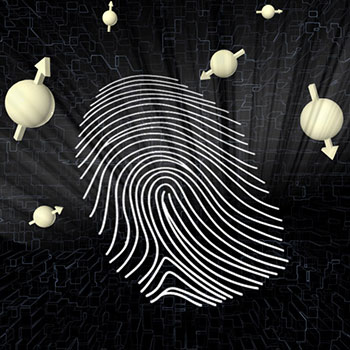Quantum mechanics are a mystery to most of us, but now researchers in The Edward S. Rogers Sr. Department of Electrical & Computer Engineering are teaming up with the University of Waterloo’s Institute for Quantum Computing to take advantage of that mystery to potentially improve the security of communication networks.
A particular example of this quantum advantage occurs in the field of quantum fingerprinting: quantum mechanics permits an exponential reduction in communication cost compared to the classical case. And yet, despite our advanced theoretical understanding of this quantum advantage, demonstrating it experimentally has been a central challenge.
In a recent paper published in Nature Communications, Professor Hoi-Kwong Lo (ECE, Department of Physics) worked with University of Waterloo’s Professor Norbert Lütkenhaus to demonstrate a quantum fingerprinting system that is capable of transmitting less information than the best known classical protocol. They designed a new practical quantum fingerprinting protocol by using weak coherent pulses and built the system with commercial off-the-shelf fibre-optical components.
They implemented the protocol for input sizes of up to 100 Mbits and showed that the magnitude of information transmitted in the quantum fingerprinting protocol was up to 66 per cent lower than the best known classical protocol. Their results constitute a significant first step in the development of experimental quantum communication complexity, which may also be extended to other quantum protocols with a proven exponential advantage over the classical case.
With files from Sheela Manek, Department of Physics
More information:
Marit Mitchell
Senior Communications Officer
The Edward S. Rogers Sr. Department of Electrical & Computer Engineering
416-978-7997; marit.mitchell@utoronto.ca
